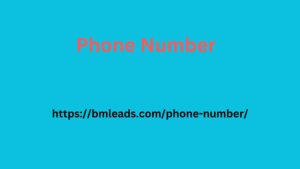Analysis: A Comprehensive Guide
analysis involves the collection, processing, and interpretation of data generated by mobile devices, such as smartphones and tablets. This data can provide valuable insights into user behavior, preferences, and location trends.
Key Types of Mobile Data :
- Usage Data: Information about how users interact with their devices, including app usage, network traffic, and battery consumption.
- Location Data: GPS coordinates and other information about a user’s location.
- Demographic Data: Information about the user’s age, gender, and location.
- Behavioral Data: Information about user preferences, habits, and interactions with apps and services.
Sources of Mobile Data:
- Network Operators (MNOs): Collect on network usage, call records, and SMS messages.
- Apps: Collect data on app usage, user behavior, and in-app purchases.
- Operating Systems: Collect data on device usage, app installations, and updates.
- Third-Party Data Providers: Companies that Phone Number specialize in collecting and analyzing .
Applications of Analysis:
- Marketing: Understanding customer behavior, targeting ads, and measuring campaign effectiveness.
- Urban Planning: Analyzing traffic patterns, population density, and transportation usage.
- Retail: Understanding customer shopping habits and optimizing store locations.
- Healthcare: Tracking disease outbreaks, monitoring health trends, and developing personalized healthcare solutions.
- Public Safety: Analyzing crime patterns, traffic accidents, and natural disasters.
Challenges in Analysis:
- Privacy: Ensuring the privacy of user data and complying with data protection regulations.
- Quality: Ensuring the accuracy The lobar market needs marketers and reliability of.
- Data Integration: Combining data from multiple sources to get a complete picture of user behavior.
- Analysis: Analyzing large and complex datasets to extract meaningful insights.
Tools for Analysis:
- Analytics Platforms: Google Leads Blue Analytics, Firebase, App Annie, Mixpanel.
- Data Visualization Tools: Tableau, Power BI, Looker.
- Statistical Software: R, Python, SPSS.
The Future of Analysis:
As devices become increasingly ubiquitous, the importance of analysis will only grow. Advancements in technology, such as artificial intelligence and machine learning, will enable even more sophisticated analysis of By effectively leveraging analysis, businesses and organizations can gain valuable insights into their customers, improve their products and services, and makedriven decisions.



